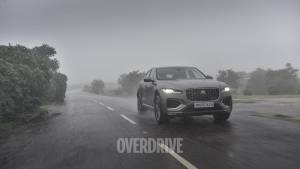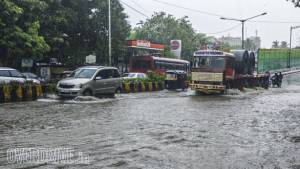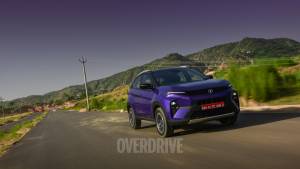Top tips for driving and maintaining your car in the monsoon season
The monsoon has finally arrived and with the rain comes relief. However, as automobile enthusiasts, we must also remember that with the rain comes caution too. Lack of awareness is not only dangerous to you but also can speed up the deterioration of your vehicle. So here are some of top tips for driving and maintaining your car in the monsoon.
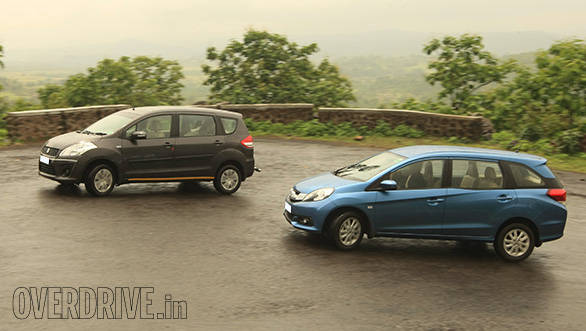
1. Check your brakes and make sure they're in tip-top shape. Keep in mind that on wet roads, the effectiveness of your brakes reduces.
2. Windshield wipers don't last the life of the car. Replace them every two rainy seasons for a clear view. In heavy rain, go only as fast as the visibility allows.
3. Don't cover your car in the monsoon. It doesn't allow for all the water, especially in the nooks and crannies, to dry up. This leads to rust formation.
4. Get rid of any cuts, dents or cracks in the paintwork to avoid rusting and corrosion.
5. Run a check on the wiring harness and fix any cuts and exposed cables to avoid short-circuiting electronics. Watch out for standing water too.
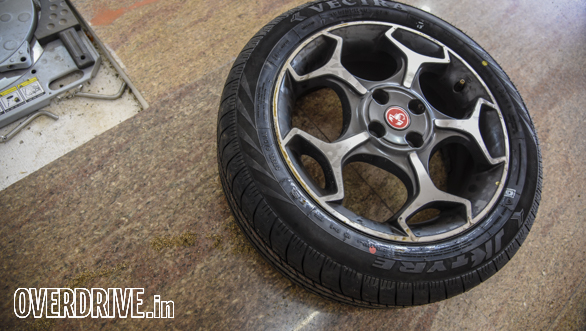
6. Make sure the tyre treads have the recommended depth to lessen the chances of aquaplaning.
7. Stay on low beam and turn on your low-mounted driving lamps if you have them. High beams reflect off the water and actually obscure more than they illuminate.
8. Products that claim to allow rainwater to bead and run off the glass work really well. But avoid application in those areas where the wipers do the wiping. The surface can become too slick, causing the blades to skid and skip across. The rear windshield on non-wash-wipe equipped cars is a good place to apply these products.
9. Stuck in deep water? If the water level is close to the door handles on the outside, you won't be able to open the doors with your strength. Roll down windows early in case the power window motors get water logged. In the worst case scenario, kick the windshield outwards - it's fixed with glue and will pop out with sufficient pressure.
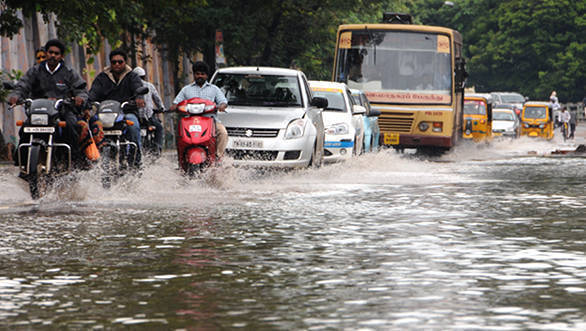
10. Most cars can actually drive through fairly deep water without too much trouble, if needed. The trick is to drive slow and steady, keep the revs up - never get off the gas - slip the clutch to maintain a low speed and high revs, if needed. We've managed, in a pinch, water up to the headlamps. If the exhaust is underwater, the engine will suck water in and end up holing a piston if you get off the gas.
11. Avoid sudden braking or sudden acceleration which may catch people around you unawares and cause an accident.
12. Outside mirrors obscured by a fogged window or rain? Just hit the power windows and take them down a bit and then put them back up. Clear!
13. Avoid collection of dead leaves, insects and debris in the channels under the bonnet, boot-lid, roof-rails etc. to prevent contamination from rainwater.
14. Keep jumper cables handy and your battery charged up.
15. When the car comes across a wet patch, maintain a slow but steady pace through it. Panicking will result in braking or accelerating, causing the car to lose control.
16. Don't wait for the first slide to scare you into going slower. When it starts to rain, slow down.
17. Carry umbrellas. It's one of the simplest things you can do that will make the commuting in the monsoon easier.
18. Maintain sufficient distance from vehicles around you. Although you might be in control, you never know when the person next to you won't be.
19. Rub a cut potato or tobacco from a cigarette on your windshield as a crude but effective anti-fog solution.
20. If your car doesn't have a rear defogger, crack the windows a bit and switch off the AC's recirculation function.
21. If you manage to get the seats wet in the car, it will leave a foul smell and could result in mould formation after a while if not aired out. If you've got a wet vacuum cleaner, use it to pull out as much water as possible. If you've got a garage and table fans, position the fans in such a way that there is sufficient air flow to dry up the seats. If you can't do any of these, at least drive with the windows down in every chance you get to dry up the upholstery.
